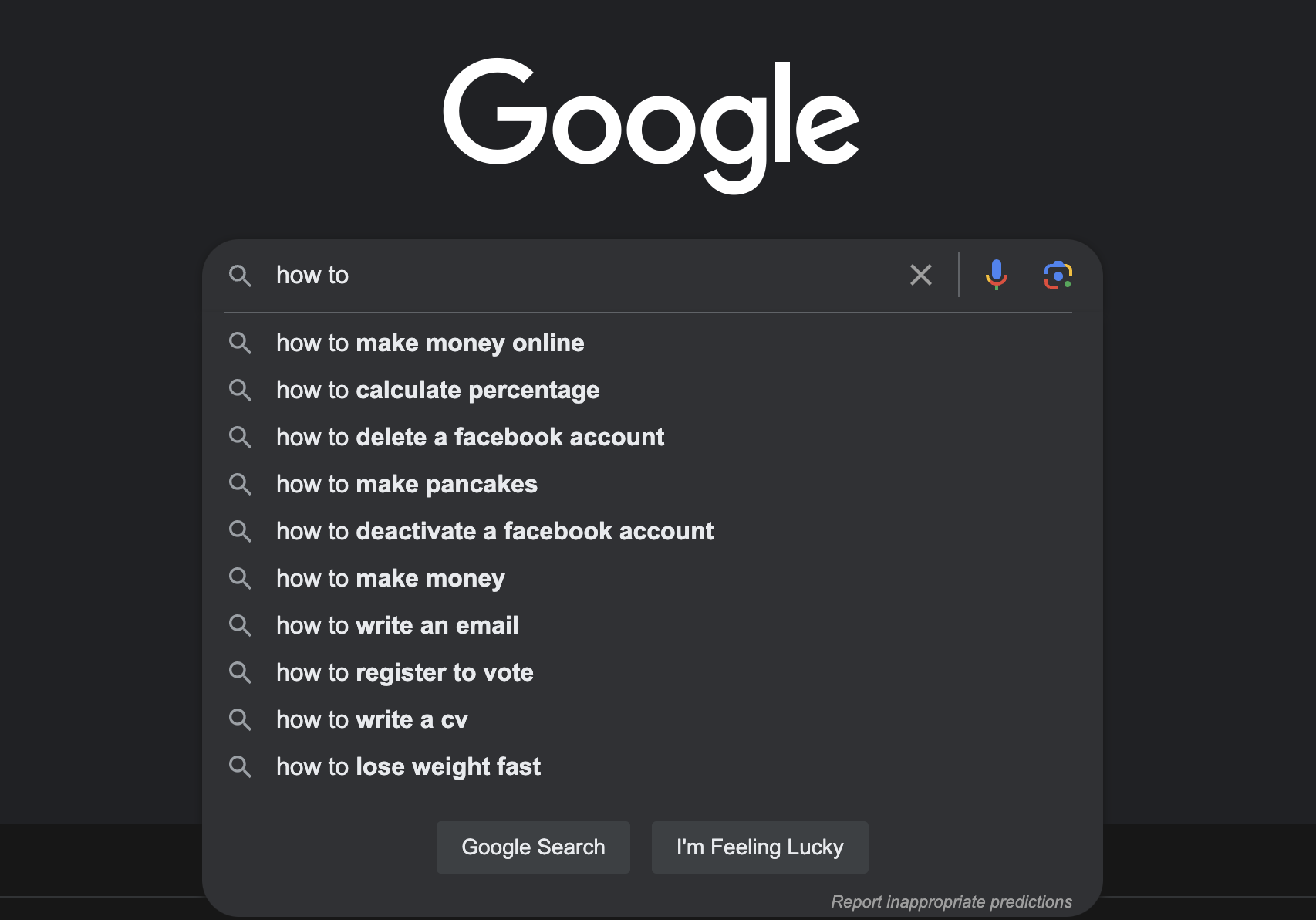80% of Google users are actively searching for how-to content online. But have you ever felt like you were drowning in a sea of confusing instructions, leaving you more lost than before? Now imagine your customers, your team. A shocking 25% of employees report information overload as a major source of stress.
A clear and concise how-to guide can be a lifesaver. It positions you as an expert, empowers your readers, and makes finding helpful information a breeze.
Think of it as a helping hand for those frustrated users asking, "How do I do this?" You have the answers, and your audience has the questions.
People are actively searching online for clear instructions, but poorly written guides can be frustrating. This blog will show you how to create powerful and user-friendly how-to guides that capture attention and get straight to the point.
What Is a How-To Guide?

Before getting into the nitty-gritty details of creating and writing a guide (also known as a step-by-step guide), it’s important to understand why they’re commonly used and what they’re commonly used for
Simply put, a how-to guide is a piece of content that aims to provide its readers with clear and simple instructions on how to do something
Clear, easy-to-follow instructions separate a great how-to guide from a bad one. It allows the reader to successfully achieve the end goal with as little trouble as possible.
Imagine this: You’re trying to figure out how to assemble new furniture, how to install software without a 5-page manual. What do you do first? Almighty Google.
Creating an engaging how-to guide hinges on three key elements: understanding your target audience, choosing a focused topic that addresses their needs, and presenting the information in a clear and engaging way.
Planning Your How-To Guide
Before putting pen to paper (or fingers to keyboard), it's important to effectively map out exactly what your how-to guide will be covering. Here are three simple tips to help you with planning an easy-to-follow, effective how-to guide:
1. Identify Your Audience
You need to take a moment to think about who you're writing for and what you want them to achieve. Are you writing for beginners, experts, or somewhere in between? A how-to for complete beginners will look very different from one aimed at more experienced individuals.
Understanding your audience and their needs, preferences, and skill levels will help you tailor your guide to suit them. The more relevant and relatable your content is, the more likely it is to resonate with your readers.
2. Choose a Focused Topic
Now for the fun part; choosing what you want to teach the world. The most useful how-to guides tackle a very specific task, not an overarching theme. "How to Change a Tire" is much better than a general "Car Maintenance 101" guide.
Keep it simple and follow one line of thinking throughout the guide. If you have multiple concepts or tasks to cover, break them out into different how-to guides. Do research on popular keywords and trending topics to ensure your how-to guide gets the attention it deserves.
3. Outline the Steps
There's nothing more frustrating than a set of instructions that jumps around without making sense. Your steps need to be in a logical sequence and should build on each other.
Take time to carefully write out every single step of the process in chronological order. Use an outline to first get the "big picture" flow down, then drill down further into any substeps for any difficult instructions. Use bullet points or numbered lists to make the guides easier to follow.
Strategies for Creating an Effective How-to Guide
You're finally done planning, and now it's time to put pen to paper (or fingers to keyboard) and start creating your how-to guide. Keep your language clear, easy-to-understand, and jargon-free to make it easier to understand.
Here are some best practices for creating a clear and engaging how-to guide:
1. Choose a Catchy Title
On average, 8 out of 10 people read a headline, but only 2 out of the 10 actually read the rest of the content. Your title is like a flashing neon sign and is the first thing that will grab anyone’s attention. Make it engaging and compelling. Try using a specific title that makes the benefit crystal clear.
For example:
Bad title: How to grow a vegetable garden
Good title: How to grow a nutritional vegetable garden in 30 days
A good title is specific, mentions the benefit, and creates a sense of achievement while also telling the reader how long it’ll take.
2. Use a Conversational Tone
How-to guides are practical and instructional, so they ideally need to be casual, and conversational throughout the writing. Use language that’s easy for anyone to understand, add a bit of friendly humor here and there (because who doesn’t love a good joke?).
The reader needs to feel like you're walking them through the process in-person, not lecturing them with technical jargon.
3. Break it Down Into Clear Steps
The rule of thumb of any quality how-to guide? Break the process down into a series of clear, instructional steps. Under each step, give specific details on how to complete that action.
Each step needs to be "bite-sized" and easily scannable. Generally, 1-4 sentences per step is best.
Use brief paragraphs, bullet points, and numbered lists to help break up any long steps into readable chunks.
4. Show and Tell
Researchers found that people who follow directions with text and illustrations perform 323% better than those who don't.
Words are important, but visuals like screenshots, diagrams, illustrations, and videos take your how-to guide to the next level. It’s not enough to just tell; show your audience how to get it done. Platforms like Wizardshot and Helpjuice allow you to create, engaging how-to guides and tutorials that equip and empower your audience.
Try to include at least a few photos, videos, or screenshots walking your audience through the steps. Just be cautious about going overboard - too many visuals can be distracting.
5. Test Your How-to Guide
Before you hit publish, always test your how-to guide instructions by letting others follow them to see if they really are clear. This allows you to identify any missing pieces or unclear steps in the process.
Based on the results, go back and change any areas that could be improved for maximum clarity. An extra few minutes of polishing will improve the quality of your how-to guide.
6. Share Your How-to Guide
Once you’ve created your how-to guide, it’s time to publish it and share it with the world!
It's easy to create, store, and share how-to guides with Wizardshot. You can create step-by-step guides using the free tutorial software by performing your actions while it automatically figures out what you're doing and converts it into a tutorial.
Once you’ve published your guide, share it across your social networks, online communities, and relevant forums to reach as many people as possible.
7. Measure Effectiveness
Once your guide is out in the open, don't just sit back and relax; keep an eye on its performance and gauge whether or not people are engaging with it.
Monitor metrics like page views, engagement, and feedback to see how well your guide is resonating with your audience. Use this data to identify areas for improvement and work on your guide over time.
Benefits of Creating a How-to Guide
Why should you spend time creating a killer how-to guide? For starters, this type of content is incredibly valuable for your audience. We all need to learn new skills, and a well-written how-to acts as a reliable source. Here are a few benefits of creating a how-to guide:
- Establish yourself as an authority. Sharing your knowledge through a how-to guide positions you as a reliable source. By demonstrating your expertise and sharing your knowledge, you build trust and position yourself as an industry expert.
- Attract new customers. High-quality how-to guides are lead magnets. They draw in new customers interested in the topic you cover. Whether you're a business owner, blogger, or simply passionate about a subject, an engaging how-to guide can significantly boost your audience reach.
- Improve brand awareness. Creating and sharing valuable content like how-to guides strengthens your brand identity and increases visibility. As your audience interacts with your guide and potentially shares it with others, your brand awareness improves.
Share your knowledge with Wizardshot and Helpjuice
Did you know that Helpjuice has over 1 million users?
Now that you know how to create a comprehensive how-to guide, it’s time to actually get down to it and create one with Helpjuice and Wizardshot.
When you get your how-to guide right, your brand and your audience win. There’s more to creating a how-to guide than simply giving instructions.
Remember, the key to a successful how-to guide is to be clear in your writing, follow a set structure, and keep it engaging. Easy-to-follow step-by-step instructions allow your readers to go through the process with confidence.
A well-organized structure ensures your information is easy to follow and navigate, and engaging writing keeps your audience hooked and eager to learn.
Ready to get started? Create tutorials and how-to guides painlessly. The world needs your knowledge. Put your skills to the test and start creating your how-to guide.
Wizardshot and Helpjuice offer user-friendly platforms, multimedia support, and features specifically designed to make creating engaging how-to guides as smooth as possible. Sign up for a free Wizardshot account and get started on your journey to knowledge-sharing!
FAQs
Q1. How long should a how-to guide be?
A1. The length normally depends on the topic, its complexity, and the depth of the instructions. It shouldn’t be too long or too short. You need to strike a balance between making it long enough to cover all the necessary steps in detail, but not so long that it becomes overwhelming.
Q2. How often should I update my how-to guide?
A2. It's a good idea to periodically review and update your guide to ensure that the information is accurate and up to date. The frequency depends on the topic and how often change might occur.
Q3. What makes a good how-to guide?
A3. A good how-to guide has a few key elements. These include writing about a specific and focused topic, writing instructions in a logical step-by-step format, using clear visuals, using a conversational yet authoritative tone, and having clear takeaways.


.jpg)